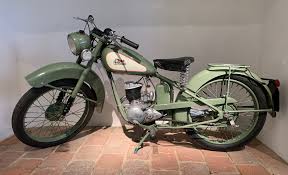Introduction to the BSA Bantam
The BSA Bantam represents a significant chapter in the history of British motorcycles, capturing the essence of post-war motorcycling culture. First introduced in 1948, the Bantam quickly became a versatile and beloved choice among riders due to its lightweight design and simple mechanics. This bike is not just a machine; it embodies a period of innovation and accessibility in motorcycling that resonates even today.
Historical Significance
The Bantam was initially designed by BSA (Birmingham Small Arms Company) to compete in the ever-expanding motorcycle market of the late 1940s. Its 125cc two-stroke engine was engineered for ease of use, making it particularly popular among new riders. Its affordability and minimal maintenance requirements made it a practical choice for a generation looking for economical transportation following the Second World War.
Over its production span, which lasted until 1971, over 200,000 units were sold worldwide, establishing the Bantam as a staple for motorcycle enthusiasts. Its ability to adapt was evident with various models incorporating advancements such as electric start and improved braking systems throughout the years.
Modern Relevance
In recent years, the BSA Bantam has seen a resurgence in interest, particularly among vintage motorcycle collectors and enthusiasts. Events such as the annual Classic Bike Show in the UK often feature display categories for Bantams, highlighting the bike’s ongoing legacy. Additionally, BSA has announced plans to revive the brand, generating buzz around the possibility of modern iterations of classic models, potentially including the Bantam.
Moreover, the Bantam’s simplistic design and robust community of restoration enthusiasts have solidified its status within classic motorcycle culture, with many owners dedicating time and resources to restore these iconic machines to their former glory.
Conclusion: The Legacy of the BSA Bantam
The BSA Bantam is more than a motorcycle; it is a symbol of the post-war era that allowed individuals to embrace freedom through two wheels. As the interest in classic motorcycles continues to rise, the Bantam remains a significant player in vintage collections and cultural references. The potential for BSA to revive this classic model suggests that the Bantam’s legacy will not only endure but may evolve to capture the next generation. For motorcycle enthusiasts, the BSA Bantam is a reminder of the simplicity, joy, and freedom that biking brings, affirming its place in history and in the hearts of riders.
